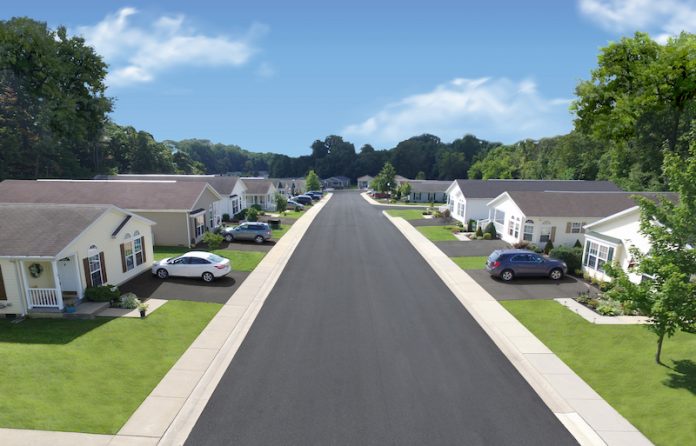Today, the majority of mobile homes are actually moved only once from the factory to the home site. Still, mobile home delivery is a complex process that has the potential to be stressful and even costly if the proper procedures aren’t followed.
What preparations should a home buyer take to make sure their manufactured home is delivered successfully and safely? Here, MHVillage’s manufactured home experts will give buyers a quick guide for what to expect from the mobile home delivery process.
Preparing a Manufactured Home Lot
Before a manufactured home ever touches your lot, the lot must be prepared and in good condition. Take the following steps before buying a manufactured home to ensure that the site is ready to receive your new home:
- Always have a prospective lot inspected by your manufactured home dealer before designating it as your delivery space.
- Ensure that your target home site is properly zoned for a residential dwelling and that manufactured homes don’t violate any local zoning regulations. (If the lot is in a manufactured home community, your zoning is probably OK.)
- Know that successful mobile home delivery will require you to have sufficient flat, accessible space in each direction from your home site to give work vehicles room to maneuver.
- Most manufactured and mobile home dealers have delivery ranges (typically around 100 miles), so check to ensure that your site isn’t outside the range of your preferred dealer (or vice versa).
Laws and Permits
A homeowner also needs to check with their local government to ensure that they’re familiar with all of the legal and permit procedures for situating a manufactured home on their land. Local utilities are particularly important, so research what it takes to hook your site up to water, gas, and electricity (or to install your own systems, if permitted).
Those who are considering moving into a manufactured home community should also read the community’s rules in detail because these rules can affect what kind of home you can buy and how you can position it. Rules, requirements, and fees vary widely from community to community, so it’s important to know before you buy.
Also, check to ensure that any logistics company that you trust with your new manufactured home is an expert in moving mobile homes. As you might expect, it’s a specialized industry that shouldn’t be left to amateurs. A manufactured home dealer will usually work with a skilled and experienced mobile home mover, or you can choose one from our state-by-state list of mobile home movers.
Planning the Mobile Home Delivery
The manufactured home delivery process demands careful planning and coordination at every step. If possible, it’s a good idea to use a single contractor who can handle everything from moving to assembly, and mobile home setup or to go through a dealer with the resources to coordinate multiple contractors.
Route planning is a particularly important task for moving a manufactured home, as low bridges, power lines, steep hills, and excessively curvy roads must all be avoided. Again, this isn’t a task for the homeowner. Leave it to the professional manufactured home movers, as they’ll be able to spot any problem areas during their planning process.
Note that your mobile home delivery costs may not include extraordinary circumstances, like bad weather and heavy traffic. Your transportation budget should have some flexibility built in to account for these possible hiccups.
Before your home is delivered, put corner markers for your mobile home in the exact location that the corners of your home will be placed. Again, a dealer or inspector can usually help with this.
Delivery Day
Once the arrangements are all in place, the homeowner’s main role on delivery day is to let the experts do their jobs. The manufactured home, along with additional materials such as tie-downs, will be shipped to the home site. Once on-site, the manufactured home’s parts will be inventoried by the construction supervisors, installed by the home installation contractor and examined using a HUD checklist to ensure that the home is installed correctly.
Finally, to get the manufactured home move-in ready, plumbing and electrical contractors must connect it to the water and electrical grids. Upon completion, the owner of the home must then obtain an occupancy permit from their local building authority to certify that the home is safe to inhabit.
Explore more
We cover manufactured home moving, lot buying, and many other important topics in posts like How to Buy a Manufactured Home and Land Together and Moving a Mobile Home: Your Questions Answered. And for those in need of a qualified mover, remember to check our list of professional mobile home transporters.














